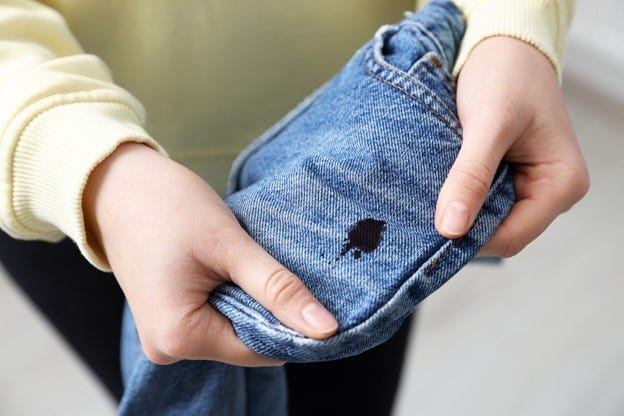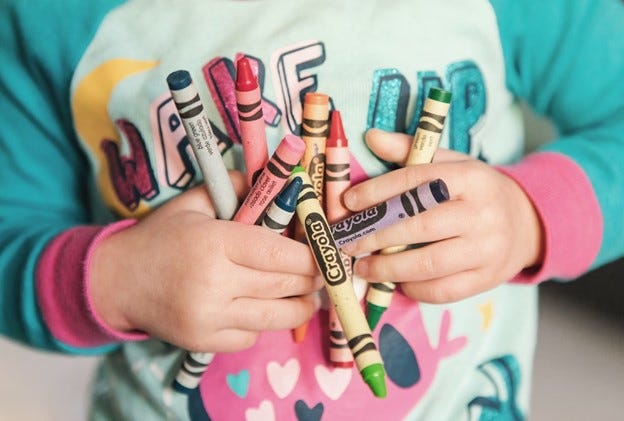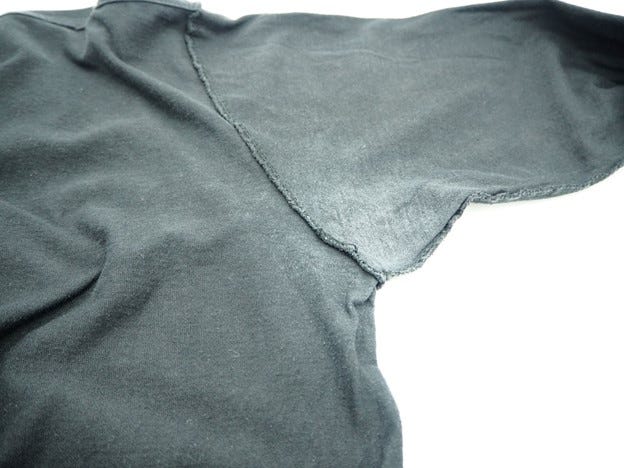A Matter of Time

We have a lot of different fabrics in our closet that need care. Learn how to remove stains from clothing, including hard-to-treat delicates like underwear.
_(1).jpg?width=780&height=555&format=jpg&quality=80)
Removing grease stains can be challenging, especially on clothes, since they are not soluble in water. Your standard laundry cycle won’t cut it with greasy stains! However, there’s hope!
Imagine this: One moment, you are riding your bike, working on your car, or eating a delicious slice of pizza while resting your back against a vehicle, and the next moment, you are staring down a big oil/grease stain on your favorite pair of jeans and wondering if you’ll ever be able to wear them again.
Everyone has a favorite pair of jeans, but dealing with ink stains on jeans, courtesy of a ballpoint, fountain, gel, brush, calligraphy, or any other type of ink pen.
No matter how careful you are, permanent marker ink stains happen and are frustratingly difficult to remove.
Printer ink stains are often an unavoidable price that most people pay for producing printed documents or changing/refilling printer cartridges.
Crayons are cheap, generally non-toxic, require no instructions, come in a wide range of colors, and are easily used by kids for drawing, coloring, writing, or to practice and exercise their fine motor movements in their hands.
Lipsticks are essential makeup products and an important form of self-expression in almost every fashion trend. They apply coloration and texture to lips to make you feel and look sexy, confident, and creative.
Makeup can help you look your best by boosting your confidence, enhancing certain features, or covering blemishes. But the dreaded feeling of accidentally getting some of it on your clothes while applying it will always remain with you.
Tar stains often appear on clothes, whether from a roofing project, a beach adventure gone wrong, or any other mishap. Not only are they messy, sticky, and stubborn, but also extremely frustrating!
We have all been there as a child, teenagers, or adults. When you went outdoors wearing your favorite piece of clothing, suddenly, out of nowhere, you got an unsightly mud stain on it.
A stained collar or cuff suggests a lack of care, eating or drinking without caution, or using hair or skin cosmetics products that transfer onto clothes. Generally, they are a telltale sign that your clothes are being cared for properly.
Clothes fading over time is less than ideal but a common occurrence due to various factors such as ignoring care label instructions, exposure to sunlight, repeated washing, harsh detergents, and friction during wear.
Jeans are comfortable, durable, versatile, and on-the-go choices for many that work best for casual outings, rugged adventures, and everything in between.
In the world of fabrics, silk stands out as the unrivaled queen. It's lightweight, durable, highly breathable, and resists moisture, ensuring it doesn't cling to your body. This makes silk ideal for keeping you cool and comfortable on hot days.
Like memories, happiness, and disappointments, stains are an inevitable part of life. They can occur anywhere and anytime, but they don't have to be permanent, especially on clothes.











.jpg?width=954&height=536&format=jpg&quality=80)
.jpg?width=954&height=536&format=jpg&quality=80)







.jpg?width=954&height=536&format=jpg&quality=80)




















